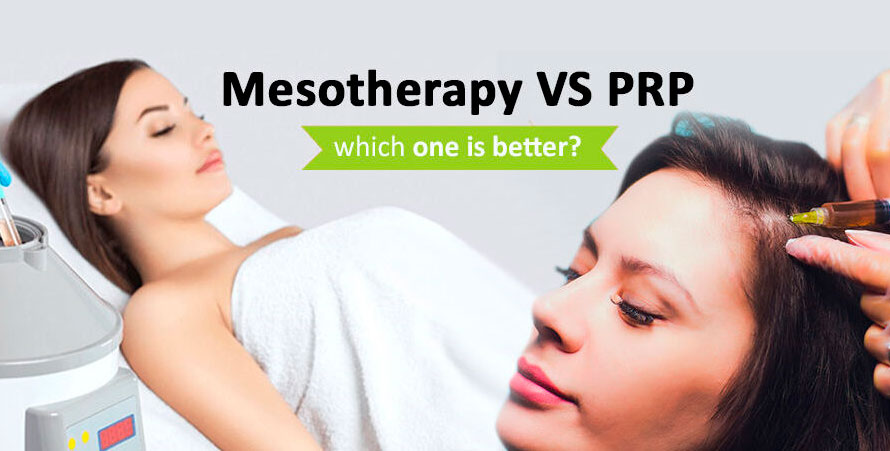Unit R-04, Marinascape Mall, Marina, Dubai, UAE
Unit R-04, Marinascape Mall, Marina, Dubai, UAE
drypSKin is your go-to aesthetic and wellbeing clinic.

Skin aging occurs when the underlying tissues’ regenerative and homeostatic capacity begins to decline. There are several treatments that may be able to restructure the damaged skin tissues, reducing the signs of aging. This is known as biostimulation, and it stimulates the production of new collagen and elastin. Biostimulation also helps the vascular network and extrafibrillar matrix, which are responsible for skin tone and texture. Platelet-rich plasma (PRP) therapy and mesotherapy are two well-known treatment options for patients looking for total skin rejuvenation.
Skin stimulation and dermal rejuvenation are the primary factors for improving skin aesthetics in cosmetic dermatology. Exogenous fillers, such as PRP and mesotherapy injections, can help fibrotic skin conditions achieve a dermal response. As a result, reversing the signs of aging by increasing skin volume can be relatively simple.
Platelets are growth and healing factors that occur naturally in the body. Platelet-rich plasma injections can thus act as storage pockets for a variety of important skin-repairing agents. After being administered into the skin, platelets become active and provide targeted action for skin improvement.
PRP therapy has grown in popularity in the field of aesthetic medicine in recent years. Dermatologists, plastic surgeons, and other skin specialists, including craniofacial surgeons, use it to treat a variety of skin problems. Because of its growth-promoting properties, PRP is useful in medical procedures for skin enhancement. It has little to no side effects and speeds up the repair of damaged or aged soft tissues while also improving skin appearance. Doctors recommend PRP therapy for skin rejuvenation because it produces better results than pre-made concentrated growth factor serums used in other therapeutic methods such as mesotherapy.
Skin Rejuvenation with Mesotherapy
Mesotherapy, also known as bio-revitalization or bio-rejuvenation, is a medical aesthetic procedure that is used to achieve younger-looking skin. To combat skin aging, it uses specific plant extracts and multivitamin solutions injected transdermally.
Mesotherapy is a non-invasive skin rejuvenation treatment that can be used to treat problems on both the face and the body. The procedure is most commonly used to improve the appearance of facial skin. However, it is also considered safe for rejuvenating aged skin on the neck. Mesotherapy is also used to treat hair loss and promote healthy hair growth.
Another significant distinction between PRP therapy and mesotherapy is that PRP injections can be applied to any skin layer, whereas mesotherapy serums are only administered to the damaged skin’s middle layer.
In terms of the procedures’ efficacy as a skin rejuvenation treatment, PRP therapy has more research on its safety and effectiveness than mesotherapy.
Patients are more satisfied with PRP therapy because it takes less time and is usually less expensive than alternative treatments.
PRP Therapy is supported by medical research as an effective treatment for skin enhancement.
While mesotherapy is typically used to treat specific signs of aging, such as wrinkles and sagging skin, PRP therapy can provide total facial rejuvenation. PRP stimulates soft tissue repair by increasing collagen production, which helps overcome a variety of aging skin issues such as fine lines, loosened skin, and dark under eyes. PRP rejuvenates the face by restoring lost volume in the cheeks, evening out skin tones, and tightening the skin.
According to a study published in the Journal of the American Medical Association (JAMA), PRP has been shown to cause a variety of biochemical changes at the cellular level, resulting in significant aesthetic improvements in skin appearance.
Another study published in the Journal of Cosmetic and Laser Therapy looked at how platelet-rich plasma affected human facial skin. It was discovered to be an effective skin rejuvenation procedure, with significant skin firmness and wrinkle reduction achieved in as few as three PRP applications in various patients.
A group of researchers from Anadolu Medical Center’s Department of Pathology in Turkey assessed the utility of PRP in cosmetology. The researchers came to the conclusion that platelet-rich plasma not only boosts dermal collagen levels but also speeds up skin rejuvenation by acting as growth factors and cell adhesion molecules.
Another study published in the Journal of Cosmetic and Laser Therapy looked at how platelet-rich plasma affected human facial skin. It was discovered to be an effective skin rejuvenation procedure, with significant skin firmness and wrinkle reduction achieved in as few as three PRP applications in various patients.
A group of researchers from Anadolu Medical Center’s Department of Pathology in Turkey assessed the utility of PRP in cosmetology. The researchers came to the conclusion that platelet-rich plasma not only boosts dermal collagen levels but also speeds up skin rejuvenation by acting as growth factors and cell adhesion molecules.
Another study published in the Journal of Cosmetic Dermatology compared the efficacy of PRP on different grades of facial wrinkles. The researchers discovered that even a single application of PRP can improve skin appearance without causing excessive fibrosis.
In conclusion, PRP therapy is thought to be a better option for accelerated skin remodeling and regeneration than mesotherapy.